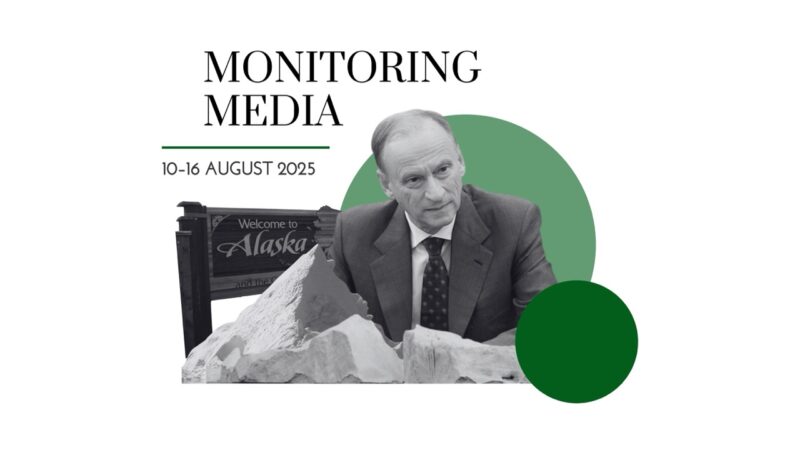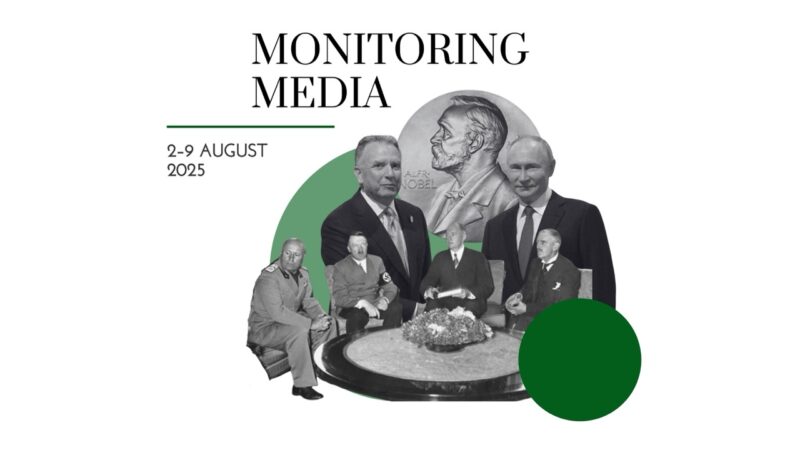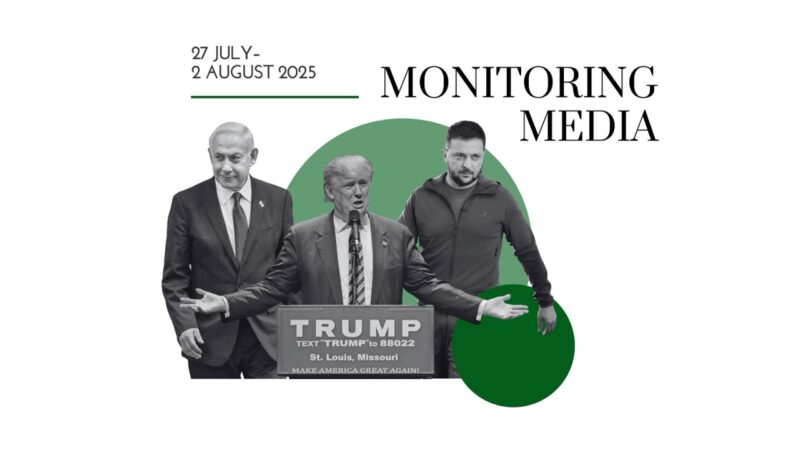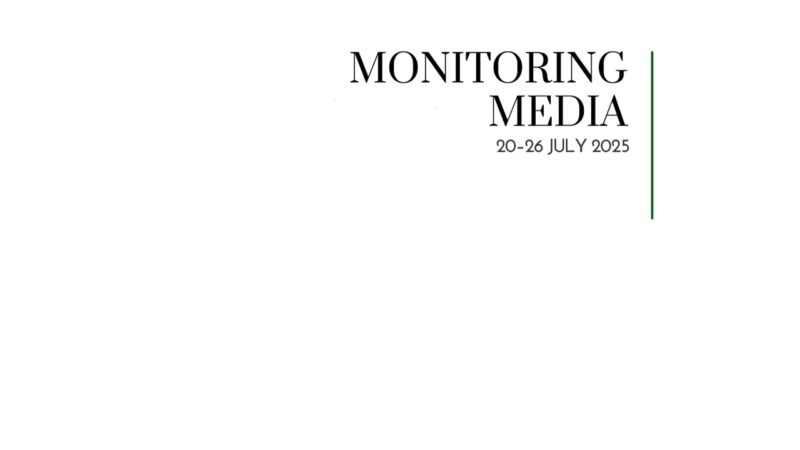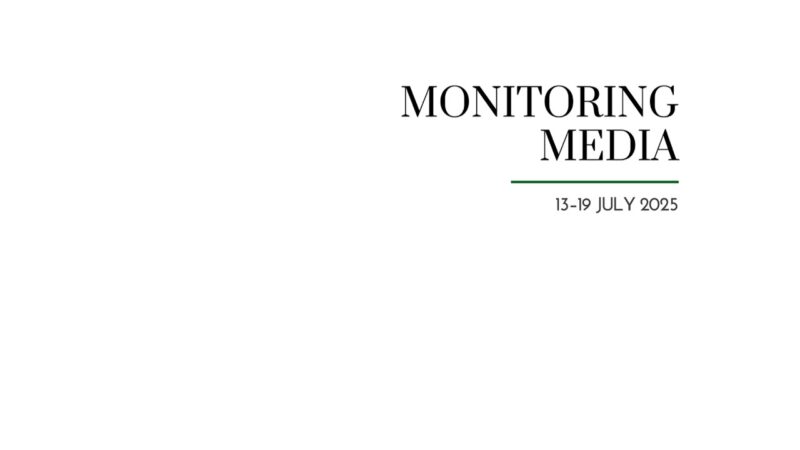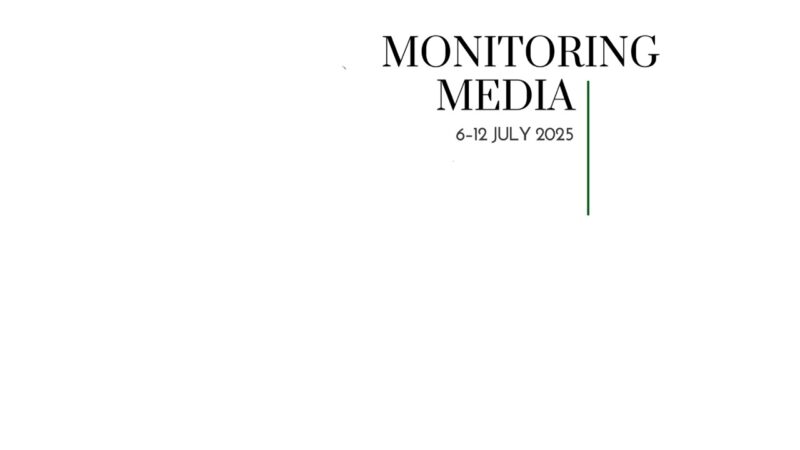Russia lies to itself

CIUS weekly report on North American media coverage of Ukrainian affairs, 29 September–5 October 2024
Five publications (The National Interest, Foreign Affairs, Globe and Mail, Foreign Policy, and Washington Post) were selected to prepare this report on how Ukraine has been portrayed in the North American press during the past week. The sample was compiled based on their impact on public opinion as well as on their professional reputation, popularity among the readership, and topical relevance. These publications represent centrist viewpoints on the political spectrum.
This MMS report covers only the most-read and relevant articles about Ukraine, as ranked by the respective North American publications themselves in the past week. Its scope covers promoted articles on home pages and articles from special sections on Ukraine, with the hashtag #Ukraine, from the paper editions of the publications, and about Ukraine from opinion columns and editorials.
Featured topics
- The world and Ukraine: US politics threaten Ukraine’s war effort.
- Russia at war: US citizens will determine the future of Russia; Russia’s alliance with North Korea is a balancing act between military inferiority and recklessness; Russia’s global information warfare has evolved.
MMS summaries
Russia lies to itself. Thomas Rid (Foreign Affairs) argues that Russian propaganda aimed at the West is also harming the Kremlin itself. In early September 2024, the Russian disinformation project Doppelganger made headlines due to its activity of cloning the websites of well-known media outlets and spreading fake news on their behalf. There was a significant leak of internal information about Doppelganger’s plans to promote Kremlin narratives in Western states: “The recently disclosed material contains project plans, proposals, budgets, daily output targets, key performance indicators and quotas, progress reports, measures of effectiveness, private emails from disinformation operatives to government officials, the minutes of meetings held by the SDA’s overseers in the Kremlin, hundreds of media monitoring reports from target countries, thousands of archived fake stories, ideas for more fakes, and even a splashy promotional video it prepared for Russia’s presidential administration.” This data allows us to better understand how Russia spreads disinformation and propaganda. Despite Moscow’s use of new technologies, many of the country’s basic methods and goals remain unchanged from the Cold War: “They show how the SDA’s efforts to trick Western audiences may well have deceived the company’s own leadership—and the Russian government—about the effectiveness of the Doppelganger campaigns. And perhaps most important, the documents reveal that the biggest boost the Doppelganger campaigners got was from the West’s own anxious coverage of the project.” According to Rid, this revelation “demonstrates that those who wish to fight disinformation—whether it originates from Russia or elsewhere—need to start thinking very differently about how to counter [such] campaigns.”
US citizens will determine the future of Russia. Joel Ostrow (National Interest) argues that Russia’s future can be determined from the outside. The Russo-Ukrainian war has undermined Moscow’s ability to determine its own future. The former military superpower “now depends on Iranian drones, North Korean missiles, and World War II–era Soviet equipment to fight its war on Ukraine. It has lost more than 700,000 soldiers, 100,000 armored vehicles and artillery systems, and large portions of its navy and air force to a Ukraine it expected to conquer in two weeks.” Ostrow contends that Moscow has lost the ability to control its future. In particular, this year’s elections in the US will determine not only that country’s prospects but also those of Russia: “a few thousand American citizens…will decide that future.” According to the author, “The real hope to change Russia’s course comes from outside Russia. The direction the United States takes will determine which of the two futures becomes reality. With the balance on a knife’s edge, each vote will help to determine not only who leads the United States in 2025 and beyond. It will also determine the strength of Russia’s military and the nature of the threat that it poses to the world.”
Russia’s alliance with North Korea is a balancing act between military inferiority and recklessness. Timo Kivimäki (National Interest) argues that it is a mistake to perceive the alliance between Moscow and Pyongyang exclusively as a dimension of Russia’s war against Ukraine. This alliance has created significant problems for Washington, calling into question some of the principles of the US nuclear deterrent, which is based on the belief that Washington’s interpretation of levels of escalation is shared by its opponents. The US concept of deterrence is based on punishment and the denial of victory across all levels of escalation imagined within its strategic framework. The alliance between Russia and North Korea, coupled with the Kremlin’s threats to use nuclear weapons, could discredit the last element of the doctrine: “There are no guarantees that the Russian–North Korean alliance envisions the same kinds of levels of escalation as the US strategy does. More concerning, Russia and North Korea might imagine a form of escalation where recklessness rather than the military capacity to fight wars at various levels of intensity [w]ields power.” Moscow emphasizes that a punitive nuclear strike could be directed not only against Ukraine but also against NATO countries, including the US. Given its inability to compete with NATO militarily, Russia may resort to attacking civilians. The threat of destroying cities, according to the author, “offsets US and NATO military superiority in the type of deterrence Russia engages in.” In this case, “The one who fears nuclear catastrophe more, i.e., who has a higher subjective sense of strategic risk, is more likely to make compromises to avoid it.” In addition, in nuclear bidding it is who makes the first move that is crucial: “The party forced to choose between yielding or making a move toward an all-out nuclear war stands in a weaker position. In other words, the confrontation may reach the level of a competition for who is more willing to tolerate the suffering of their civilian population. According to Kivimäki, “In such a scenario, Russia’s alliance with North Korea could be advantageous, given the image of recklessness and insensitivity toward civilian suffering associated with North Korean leadership.”
Shifting global focus, US politics threaten Ukraine’s war effort. Gary Mason (Globe and Mail) highlights the shifting global focus away from Ukraine as the conflict in the Middle East—particularly Israel’s actions in Gaza and Lebanon—–captures more attention. This shift, according to Mason, is advantageous for Russia’s President Vladimir Putin, as it may reduce US resources and political will to support Ukraine. The author also points to the emerging strain within American politics, where Republicans, emboldened by the need to support Israel, might argue against further aid to Ukraine. This change could jeopardize Ukraine’s defence—especially if Donald Trump wins the US presidential election, as he has indicated little interest in continuing support for Ukraine’s war efforts. A Trump victory would also embolden Putin, allowing him to further his military ambitions in Ukraine. Further, Mason emphasizes the growing fatigue within Ukraine itself. Polls show that support for the war is declining, especially among younger demographics, and there is even some openness to negotiating a peace deal that could result in territorial concessions. This internal weariness, combined with a possible reduction in US military aid, puts Ukraine in a precarious position. “Anyone who believed the Western world would do all it could, for as long as it took, to ensure Mr. Putin’s ruthless gambit in Ukraine failed, has to be depressed by the current state of affairs,” the author opines, reflecting the grim outlook for Ukraine’s future should global priorities continue to shift.
Biden’s cautious strategy balances Ukraine support and nuclear escalation risks. David Ignatius (Washington Post) argues that while President Joe Biden has shown perhaps excessive caution in not authorizing long-range missile strikes on Russia, his restraint is a calculated move to avoid escalating the conflict into a nuclear war. Critics who call his approach weak overlook the importance of avoiding reckless decisions that could provoke a catastrophic response from Russia. Biden is following the advice of intelligence officials who warn of real risks if the US were to cross Russia’s “red lines.” Ignatius suggests that although Biden’s caution frustrates some, it’s a responsible approach in a situation where the threat of escalation looms large. At the same time, the author emphasizes that Biden should consider other aggressive measures to support Ukraine, which is showing signs of weariness and internal division. A prolonged war could devastate Ukraine, therefore the US and its allies must help Kyiv secure a just settlement soon. The author also highlights how Putin is “escalating the war ‘horizontally’…by taking it to new fronts,” deepening alliances with Iran and North Korea, and intensifying his sabotage campaigns. “Biden needs to help Ukraine every way he prudently can,” the author concludes. “But we’re very lucky, on balance, that he doesn’t play a reckless game.”
Russia’s global disinformation OR information warfare operations have evolved. Josh A. Goldstein and Renée DiResta (Foreign Policy) remind readers that last month, multiple US government actions highlighted Russia’s ongoing influence operations aimed at distorting global public discourse (particularly inside the USA). Russia continues to use a wide array of tools, such as fake domains, covert media outlets, and real influencers to manipulate social media conversations. Recent announcements by the US Justice and State departments, alongside a Senate Select Committee on Intelligence hearing, emphasized that these tactics go far beyond the typical bots and trolls on social media. As the authors note, the Russia-linked “Doppelganger” operation used spoof websites mimicking legitimate media outlets like CNN and The Washington Post to propagate disinformation, while also using fake social media accounts to distribute the content, creating a highly interconnected system. Goldstein and DiResta also note that social media platforms like X have become a haven for malicious activity—particularly as recent leaks reveal that Russia views it as “the only mass platform that could currently be utilized in the US.” A more concealed form of Russian influence was also exposed in September, involving illicit financing of American influencers. According to the Justice Department’s unsealed indictment, two RT employees funneled nearly $10 million to a Tennessee-based content company, which hired right-wing influencers to spread content aligned with Russian propaganda. The influencers unwittingly amplified topics like Russia’s war in Ukraine and US immigration issues, further fueling division. As the authors explain, “authentic influencers with established audiences” are often more effective than fake accounts, because they can sway public opinion and resonate with real Americans. Addressing this form of manipulation will require collaboration between intelligence agencies, journalists, and tech companies to expose and prevent future disinformation campaigns: “Ensuring that US public discourse is authentic—whether or not people like the specifics of what’s being said—is a challenge that requires many hands to fix.”
